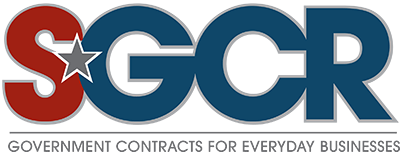Are you seeking 8a business development certification? Our detailed guide will help you understand what it means for your small, disadvantaged business. We cover the eligibility criteria, application steps, and the tangible benefits you can gain from this program, aiming to enhance your competitive edge in government contracting. Whether new or seasoned in the federal marketplace, our insights will help streamline your certification journey.
Key Takeaways
- The 8(a) Business Development Program offers small disadvantaged businesses a competitive edge in securing government contracts by providing eligibility for sole-source and set-aside contracts, training, and technical assistance.
- To qualify for 8(a) certification, a business must meet SBA size standards, be majority-owned by economically and socially disadvantaged individuals, and demonstrate potential for success along with the owner’s good character and appropriate financial thresholds.
- Successful 8(a) certification requires thorough documentation and electronic submission through the SBA’s website, followed by leveraging program benefits including business counseling, training, and procurement guidance for growth.
A Launchpad for Small Disadvantaged Businesses

A small business that meets the criteria for being socially and economically disadvantaged may be classified as an 8(a) firm owned and operated by members of these groups. The 8(a) Business Development Program, spearheaded by the Small Business Administration (SBA) under the Small Business Act, is designed to provide small businesses, particularly those with a competitive edge when vying for contracts under any U.S. agency or department, even against established businesses. Think of it as a launchpad propelling your small business into the orbit of success. Consider visiting your local SBA district office to learn more about this program and check your eligibility.
The program supports U.S. citizens who are both economically and socially disadvantaged, requiring ownership of at least 51% of a company. It’s an initiative aimed at leveling the playing field, giving small disadvantaged businesses the means to compete in the general market, and promoting equal opportunities.
The Strategic Advantages of 8(a) Certification

The benefits of the 8(a) program are manifold. They far outweigh the application effort and are pivotal for business growth. Once certified, your business becomes eligible for sole-source contracts up to $7 million for manufacturing and $4.5 million for non-manufacturing, and competitive set-aside contracts. Such contracts are a significant boon, providing a secure revenue stream and a foot in the door of government contracting.
Moreover, the 8(a) program, supported by the federal government, offers the following benefits for your business:
- It provides opportunities for your business to form joint ventures with established companies, allowing you to bid on larger and more complex projects.
- It earmarks at least 5% of federal contracting dollars for any small, disadvantaged business.
- It offers additional resources like training, technical and management assistance, and prioritization for federal surplus property acquisition.
These benefits make the 8(a) program a valuable opportunity for your business.
Navigating the Certification Criteria
So, how do you qualify for this golden ticket? Acceptance into the 8(a) program requires meeting specific criteria. Your business must:
- Be small according to SBA standards
- Be owned and controlled by disadvantaged individuals
- Demonstrate potential for success
- Be known for being good of character
Let’s delve deeper into these criteria.
Defining Economic Disadvantage
To qualify for 8(a) certification you must demonstrate economic disadvantage. This is based on an individual’s net worth, adjusted gross income, and total assets, which must fall below specified thresholds. For instance, an applicant’s net worth must not exceed $850,000. This calculation excludes the individual’s ownership interest in the applying business, their primary residence, and funds invested in official retirement accounts.
In addition to net worth, an applicant’s adjusted gross income should average $400,000 or less over the three years before applying for the 8(a) program. Furthermore, the fair market value of an applicant’s total assets, including their personal residence and interest in the applying business but excluding qualified retirement accounts, must be $6.5 million or less.
Identifying Social Disadvantage
The SBA no longer presumes certain economically disadvantaged individuals have been socially disadvantaged due to racial or ethnic prejudice or cultural bias. Instead, you must prove you are socially and economically disadvantaged by providing a narrative outlining specific instances of discrimination, complete with dates, locations, and supporting evidence.
Your narrative must include two different instances of discrimination. Each instance should be written in only two paragraphs. This is no easy task, however essential to securing your 8(a) certification and the opportunities it brings.
Step-by-Step Application Guide for 8(a) Certification

Ready to apply for 8(a) certification? The process may seem daunting, but with a detailed guide and a little determination, you’ll be on your way to tapping into a wealth of business opportunities. Let’s break it down.
Preparing Your Business for Eligibility
Before applying, ensure your business meets the SBA’s size standards, and is majority-owned and controlled by U.S. citizens who are socially and economically disadvantaged. Demonstrating good character is also crucial to your eligibility.
Businesses younger than two years may obtain a waiver for the 8(a) certification by showing substantial business experience and success. The SBA Certify website offers resources, including an eligibility questionnaire, to help you assess your eligibility for 8(a) certification.
Documentation Checklist
You’ll need to provide a range of documents to support your application. These include:
- Federal tax returns for the business and owners with more than 10% ownership for the last three years
- Recent financial statements from within 90 days of the application
- A list of contracts from the past two years
Furthermore, you should include evidence of ownership contributions, a record of asset transfers, and state business filings to prove your business ownership structure. Governing documents such as bylaws, operating agreements, and stock certificates are also required to establish your business structure. Lastly, you’ll need to provide detailed personal and financial information for all principals of the business and their spouses.
Submission and Review Process
Once you’ve gathered all the necessary documents, it’s time to submit your application. The SBA mandates that all 8(a) certification applications be submitted electronically through the certify.sba.gov website. The site offers various tools and training to help you navigate the application process.
After submitting your application, you can expect a decision within 90 days. If approved, your business will undergo an annual review process to ensure continued compliance with the program requirements.
Leveraging 8(a) Certification for Business Growth

Securing 8(a) certification is only the first step. The real challenge lies in leveraging it for business growth. How can you do this? The 8(a) certification provides access to valuable support including:
- Business counseling
- Training
- Procurement guidance
- Mentorship
- Financial assistance
- Other technical assistance to help in securing government contracts.
To maximize the advantages of 8(a) certification, focus on:
- Building relationships with key players
- Enhancing proposal quality
- Implementing a solid marketing and business development plan
- Utilizing your technical expertise and track record of past performance
- Effective communication with contracting officers, customers, and partners
- Timely bid submissions
These strategies will help you successfully compete for and complete government contracts.
Maintaining Compliance and Maximizing Program Tenure
Once you’ve secured your 8(a) certification, the work doesn’t stop. You need to maintain compliance with the program’s requirements and maximize the benefits throughout your nine-year tenure in the program.
Utilizing Online Tools and Training
The SBA has made it easier for businesses to navigate the 8(a) certification process and maintain compliance through its online resources. The SBA offers online training modules covering topics related to 8(a) certification, accessible through the SBA Learning Center.
Self-evaluation tools can help businesses determine if they meet the requirements before applying. The SBA’s Certify website simplifies the application submission process, making it more efficient and manageable for business owners. Plus, you can track the status of your application and receive communications regarding requirements and certifications on the Certify website.
Summary
The 8(a) Business Development Program is more than just a certification. It’s a lifeline for small disadvantaged businesses, providing the means to compete on a level playing field. With the right knowledge, preparation, and determination, your business can leverage this certification for growth and success. So, are you ready to seize the opportunity?
Frequently Asked Questions
Is 8a the same as a small business?
No, 8(a) businesses are considered small but specifically owned and controlled by disadvantaged individuals, making them distinct from other small businesses. This distinction allows them to qualify for certain government contracts and opportunities.
Who can apply for 8(a) certification?
Any small business that is majority-owned and controlled by U.S. citizens who are socially and economically disadvantaged can apply for 8(a) certification.
What documents are required for the application?
You will need federal tax returns, financial statements, ownership records, and personal information for all principals and their spouses. These are essential documents for the application process.
How long does the application review process take?
The application review process for 8(a) certification typically takes the SBA around 90 days.
How can a business leverage 8(a) certification for growth?
To leverage 8(a) certification for growth, a business should focus on relationship building, enhancing proposal quality, and implementing a strong marketing and business development plan. These strategies can help firms capitalize on the benefits of certification for growth and development.


